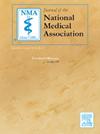老年烧伤患者死亡率的种族和性别差异。
IF 2.3
4区 医学
Q1 MEDICINE, GENERAL & INTERNAL
引用次数: 0
摘要
先前的文献描述了烧伤的种族和性别差异。本研究旨在评估老年患者的烧伤死亡率,评估种族或性别的潜在差异。我们的团队假设,女性和非裔美国人在10年内死亡的风险会明显更高。方法:利用TriNetX钻石网络数据库的数据,分析2014年5月6日至2024年5月6日诊断为烧伤(T31.0 - T31.9)的老年患者(≥65岁)。患者被分为两个五年间隔(2014-2019年和2019-2024年),以检查种族和性别差异的变化。队列按性别和种族分层,倾向评分匹配确保可比性。统计分析,包括卡方检验和相对风险,对结果进行比较,显著性设置为p 结果:在26,782例老年烧伤患者中,男性56.15% %,非裔美国人14.78% %,总死亡率为9.2% %。在过去的五年里,非洲裔美国老年烧伤病人显示死亡率的风险更高(20.2 % 8.4 vs %,RR 95 %可信区间1.864 - 3.003,p = 0.0002)相对于白色老年烧伤此外,在过去的五年里,女性老年烧伤患者表现出显著的风险更高死亡率(10.1 % 7.7 vs %,RR 95 %可信区间1.172 - -1.86,p 结论:种族和性别影响的结果对老年烧伤病人烧伤。尽管老年烧伤患者的总体死亡率下降,但特定人群在护理管理中得到了关注。本文章由计算机程序翻译,如有差异,请以英文原文为准。
Racial and gender differences for mortality in geriatric burn patients
Introduction
Previous literature has described racial and gender differences in burn injuries. This study aims to assess burn mortality rates in geriatric patients, assessing the potential differences in race or gender. Our team hypothesizes that females and African Americans will have significantly higher risk for mortality over ten years.
Method
Using data from the TriNetX Diamond Network database, we analyzed geriatric patients (≥65 years) diagnosed with burns (T31.0 - T31.9) from May 6, 2014 to May 6, 2024. Patients were stratified into two five-year intervals (2014–2019 and 2019–2024) to examine changes in racial and gender disparities. Cohorts were stratified by gender and race, with propensity score matching ensuring comparability. Statistical analysis, including chi-square tests and relative risk, was conducted to compare outcomes, with significance set at p < 0.05.
Results
Among 26,782 geriatric burn patients identified with 56.15 % males and 14.78 % of African Americans, the overall mortality rate was 9.2 %. Within the last five years, African American geriatric burn patients showed a significantly higher risk of mortality (20.2 % vs. 8.4 %, RR 95 % CI 1.864 – 3.003, p = 0.0002) relative to white geriatric burn Additionally, within the last five years, female geriatric burn patients showed a significantly higher risk of mortality (10.1 % vs. 7.7 %, RR 95 % CI 1.172–1.86, p < 0.0001) compared to males.
Conclusion
Racial and gender influence outcomes burn injuries for geriatric burn patients. Though overall mortality rates dropped in geriatric burn patients, the specific population gained attention in care management.
求助全文
通过发布文献求助,成功后即可免费获取论文全文。
去求助
来源期刊
CiteScore
4.80
自引率
3.00%
发文量
139
审稿时长
98 days
期刊介绍:
Journal of the National Medical Association, the official journal of the National Medical Association, is a peer-reviewed publication whose purpose is to address medical care disparities of persons of African descent.
The Journal of the National Medical Association is focused on specialized clinical research activities related to the health problems of African Americans and other minority groups. Special emphasis is placed on the application of medical science to improve the healthcare of underserved populations both in the United States and abroad. The Journal has the following objectives: (1) to expand the base of original peer-reviewed literature and the quality of that research on the topic of minority health; (2) to provide greater dissemination of this research; (3) to offer appropriate and timely recognition of the significant contributions of physicians who serve these populations; and (4) to promote engagement by member and non-member physicians in the overall goals and objectives of the National Medical Association.

 求助内容:
求助内容: 应助结果提醒方式:
应助结果提醒方式:


